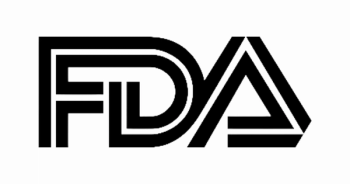
Defibrotide Does Not to Prevent Sinusoidal Obstruction Syndrome in High-Risk Pediatric HSCT
Defibrotide prophylaxis after HSCT did not reduce sinusoidal obstructive syndrome incidence in high-risk pediatric patients, per retrospective study at 2025 Tandem Meeting.
Findings from a retrospective cohort study, presented at the 2025 Tandem Meeting, showed that prophylaxis with defibrotide (Defitelio) after hematopoietic stem cell transplantation (HSCT) did not lower the incidence of sinusoidal obstructive syndrome (SOS) in high-risk pediatric patients.1
The rate of SOS incidence was 7.1% without defibrotide prophylaxis vs 26% in those who received prophylaxis among high-risk patients (n = 9584; odds ratio [OR], 1.457; 95% CI, 0.494-4.296; P = .495). Additionally, the incidence rates in each respective arm were 21.6% vs 31% among very high–risk patients (n = 666; OR, 1.081; 95% CI, 0.019-60.769; P = .970).
“Our findings highlight some concerns regarding the real-world use of prophylactic defibrotide in high-risk pediatric transplant [populations],” Archana Ramgopal, DO, an assistant professor of Pediatrics in the Bone Marrow Transplantation & Cellular Therapies Division at UPMC Children’s Hospital of Pittsburgh, stated in the presentation.1 “Prophylactic defibrotide did not significantly reduce SOS incidence, and it was associated with higher ICU admissions, costs, as well as mortality.”
In the high-risk population, the rate of intensive care unit (ICU) admission was 32.8% in patients who did not receive prophylaxis vs 50.7% in those who did (P <.001). In the very high–risk population, the respective ICU admission rates were 50.8% vs 69% (P <.05).
The median length of hospital stay among high-risk patients was 33 days in the group that did not receive prophylaxis and 40 days in the group that received prophylaxis (P <.001). Additionally, the median length of hospital stay in each respective arm was 49 days vs 56 days across the very high–risk population.
The mortality rates were 3.5% among patients who did not receive prophylaxis vs 7.9% among those who received prophylaxis in the high-risk population (OR, 2.991; 95% CI, 1.625-5.507; P = .005). Additionally, the mortality rates in the very high–risk population was 10.9% vs 23.8% in each treatment arm (OR, 2.592; 95% CI, 0.822-8.180; P = .104).
“Prophylactic defibrotide use was historically reserved for patients at the highest risk of SOS, often with comorbidities complicating recovery. It is possible that higher ICU admissions and mortality rates might reflect patient severity rather than defibrotide effects alone,” Ramgopal stated.1
Ramgopal contextualized her presentation by highlighting SOS as a potentially life-threatening complication following HSCT, which can correlate with prolonged hospitalizations, higher healthcare costs, and increased—although rare—mortality. Clinical findings associated with SOS have included hepatomegaly, jaundice, weight gain, and hyperbilirubinemia.
Although defibrotide is FDA-approved for the management of SOS, Ramgopal described how its prophylactic use remains off-label. Historically, prophylactic defibrotide use has assisted with preventing SOS based on its protective effects on endothelial cells; it may reduce the risk of vascular injury related to high doses of chemotherapy in HSCT. This background informed the study’s objective of assessing the efficacy of prophylactic defibrotide in preventing SOS and evaluating its impact on clinical outcomes such as mortality, complications, and costs.
Investigators of this retrospective cohort study evaluated outcomes related to patients no older than 21 years of age who received treatment across 50 children’s hospitals from 2016 to 2022 based on information collected from the Pediatric Health Information System (PHIS) database. SOS diagnoses were based on ICD-10 code K76.5, and investigators analyzed 10,250 encounters from 8159 unique patients. The study included a cohort of patients who did not receive prophylactic defibrotide and another of those who received prophylaxis on or before day +3 of HSCT.
The study investigators focused on the highest-risk populations as defined in the protocol of the phase 3 HARMONY trial (NCT02851407).2 As part of risk group stratification, 9584 patients were included in the high-risk population, which consisted of those with prior HSCT, active viral infection, hepatoxic drug use, and advanced disease status. Additionally, 666 patients made up the very high–risk population, which included those with severe baseline liver dysfunction or multiple risk factors.
Regarding other outcomes, the incidence rate of acute graft-versus-host disease (GVHD) was 7.7% in patients who did not receive prophylaxis vs 11.9% in those who did across the high-risk population (P = .872). In the very high–risk population, the rate of acute GVHD incidence was 13.1% vs 7.1% in each treatment group (P = .930).
Cytomegalovirus (CMV) infection occurred in 7.65% of patients who did not receive prophylaxis vs 12.6% among those who did across the high-risk population (P = .502). Additionally, CMV infection in the very high–risk population was reported in 9.5% and 14.3% of patients, respectively (P = .916).
HSCT hospitalization costs in the high-risk population were $205,325 (IQR, $124,478-$332,420) without prophylaxis vs $443,537 (IQR, $317,893-$649,494) with prophylaxis. Across the very high–risk population, hospitalization costs were $333,716 (IQR, $217,258-$578,422) vs $524,589 (IQR, $365,569-$922,337) in each treatment group.
“The data suggest that rather than [giving] prophylactic defibrotide, more vigilant SOS screening and early initiation should be prioritized, as that has been proven as effective in this treatment setting,” Ramgopal concluded.1
References
Ramgopal A, Sridar S, Goscicki B, et al. Prophylactic defibrotide in high-risk pediatric HSCT: solution or new set of challenges? Presented at the 2025 Tandem Meeting; February 12-15, 2025; Honolulu, HI. Abstract ID 34.
Grupp SA, Corbacioglu S, Kang HJ, et al. Defibrotide plus best standard of care compared with best standard of care alone for the prevention of sinusoidal obstruction syndrome (HARMONY): a randomised, multicentre, phase 3 trial. Lancet Haematol. 2023;10(5):e333-e345. doi:10.1016/S2352-3026(23)00011-X










































